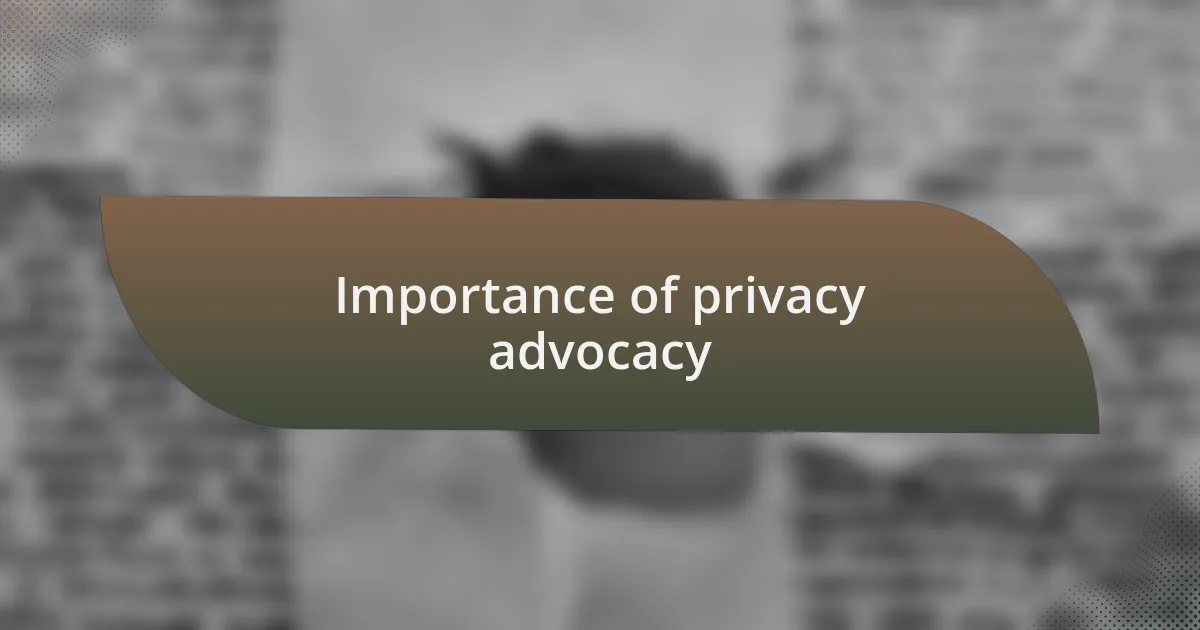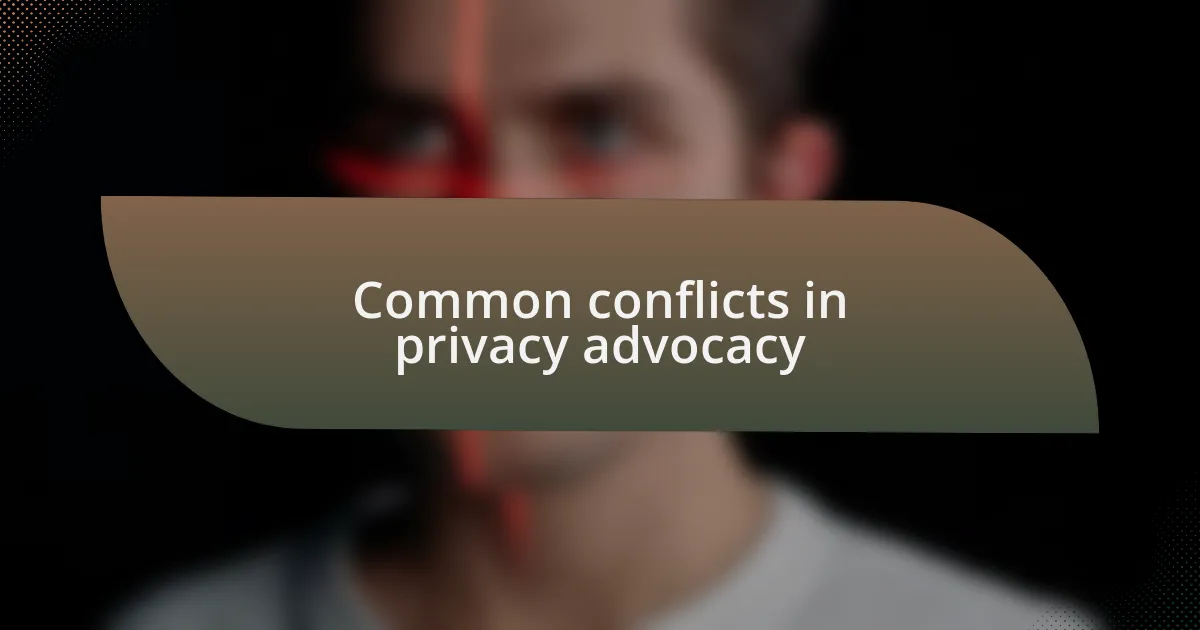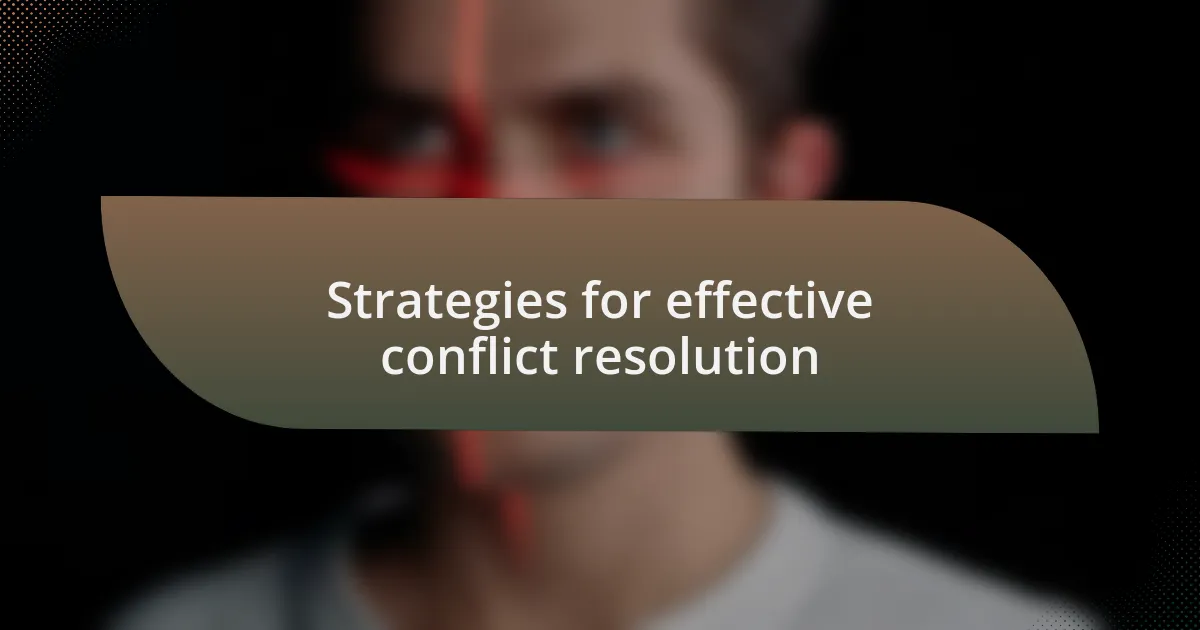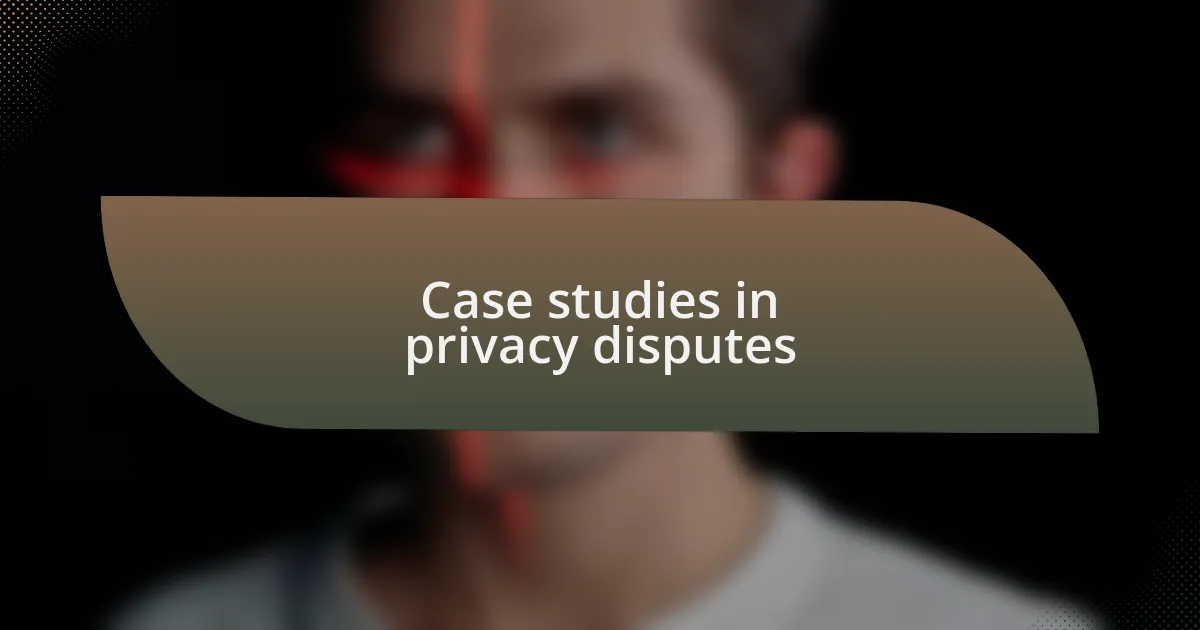Key takeaways:
- Effective conflict resolution relies on empathy, active listening, and fostering an inclusive environment for dialogue.
- Privacy advocacy is crucial for empowering individuals and holding tech companies accountable in today’s digital landscape.
- Common conflicts arise between user transparency desires and company trade secrets, as well as differing priorities within advocacy groups.
- Key strategies for resolution include maintaining respect, focusing on common goals, and ensuring clear communication to facilitate understanding.

Understanding conflict resolution
Understanding conflict resolution is about recognizing that disagreements are a natural part of human interaction. I remember a time when a colleague and I clashed over differing views on a privacy initiative. It was eye-opening for me to see that addressing our conflict head-on not only clarified our positions but also built a stronger working relationship.
In my experience, effective conflict resolution hinges on empathy and active listening. Have you ever found that simply hearing someone’s perspective can transform your understanding? In my case, taking the time to really listen made all the difference. It allowed me to address underlying concerns, paving the way for collaboration instead of confrontation.
Conflict resolution isn’t just about finding a compromise; it’s about fostering an environment where everyone feels heard and valued. I often find that conflicts can be uncomfortable, but isn’t that where growth really happens? By embracing those tough conversations, I’ve learned that the solution often lies in collective insight rather than individual opinions.

Importance of privacy advocacy
Privacy advocacy is essential in today’s digital world where our personal data is constantly at risk. I recall a scenario during a community workshop where we discussed the implications of data breaches. Seeing the shock on participants’ faces when they realized how easily their information could be compromised was a stark reminder of why advocating for privacy is vital.
When individuals understand their rights and the importance of their personal information, they become empowered. I vividly remember teaching a session on privacy rights, and witnessing someone realize they could take control of their online presence was incredibly rewarding. By advocating for privacy, we not only educate others but also foster a culture of awareness that can lead to meaningful change.
Moreover, privacy advocacy serves to create accountability among tech companies and policymakers. Has there ever been a time when you felt your voice was just too small to make a difference? I’ve been there, but I learned that collective advocacy amplifies our concerns, urging those in power to prioritize user privacy. This unified stance lays the groundwork for a safer digital environment, ensuring that our rights are respected and upheld.

Common conflicts in privacy advocacy
In the realm of privacy advocacy, there are several common conflicts that often emerge. One prevalent issue is the tension between users desiring transparency and companies keen on maintaining trade secrets. I once spoke to a developer who felt caught in the crossfire; on one hand, they wanted to innovate, but on the other, they struggled with the ethical implications of data usage. This situation raises the question: how do we balance transparency with innovation without compromising user trust?
Another frequent conflict surfaces between privacy advocates and policymakers, particularly over regulation. I remember a heated discussion I had with a lawmaker about a proposed data protection measure. They argued for flexibility to foster economic growth, while I insisted on prioritizing user rights. This experience highlighted the critical need for dialogue, as finding common ground becomes essential for effective policymaking that respects privacy while encouraging innovation.
Additionally, there’s often a rift within advocacy groups themselves regarding priorities. During a recent meeting, I observed passionate debates about whether to focus more on grassroots awareness campaigns or on lobbying for legislative changes. It made me reflect on what truly drives change in privacy—a question that sparks ongoing reflection in the community. As we navigate these complexities, it’s evident that understanding different perspectives is key to progressing in the field of privacy advocacy.

Strategies for effective conflict resolution
One effective strategy for conflict resolution is active listening. I recall a time when I was in a heated discussion with a colleague about data-sharing policies. Instead of jumping to conclusions, I took a breath and really listened to their concerns. This simple act not only calmed the atmosphere but also helped me understand their perspective. Do we really take the time to hear one another out, or do we rush to defend our positions?
Another powerful approach is to focus on common goals. In a debate with peers about the future of digital privacy regulations, I discovered that, despite differing opinions, we all shared a commitment to safeguarding user data. By redirecting the conversation toward our shared objectives, we managed to create a collaborative environment. Isn’t it fascinating how highlighting what unites us can be more effective than emphasizing our differences?
Lastly, it’s crucial to maintain a respectful tone throughout the conversation. I remember a workshop where tensions ran high as participants voiced their opinions on controversial topics. I noticed that when I addressed everyone with respect, even when I disagreed with their views, it encouraged a more constructive dialogue. Have you ever felt how a few kind words can soften even the toughest discussions? It’s amazing how respect can pave the way for resolution.

Case studies in privacy disputes
One notable case study in privacy disputes is the Cambridge Analytica scandal, where millions of Facebook users unknowingly had their data harvested for political advertising. This situation sparked outrage and highlighted the urgent need for stronger privacy protections. I recall feeling a mix of disbelief and anger as the details unfolded—how could such a breach occur without consent? It emphasized the importance of transparency and accountability in handling personal information.
Another instance involves the ongoing debates surrounding the Right to be Forgotten in the European Union. I’ve engaged in conversations with various stakeholders, from privacy advocates to search engine representatives, each presenting compelling yet contrasting views. It’s intriguing to consider: can we balance an individual’s right to privacy with the public’s right to access information? The diversity of opinions often leads to heated discussions but also fosters a deeper understanding of the complexities involved in privacy rights.
Lastly, the clash between Apple and the FBI regarding user encryption in 2016 serves as a striking example. I remember watching the public reaction unfold—some applauded Apple for protecting user privacy, while others believed that national security should prevail. It made me reflect on how crucial it is to find a middle ground, as both privacy and security are fundamental to a functioning society. How do you think we can effectively navigate such conflicting priorities in our ever-evolving digital landscape?

Lessons learned from conflict resolution
Conflict resolution often uncovers unexpected insights. I’ve learned that taking a step back can provide invaluable perspective. In one heated discussion about data privacy, I realized that listening carefully to opposing viewpoints not only diffused tension but also illuminated gaps in my own understanding. Have you ever found that a simple pause can shift the trajectory of a conversation?
Another significant lesson for me has been the power of empathy. During a workshop with various stakeholders, I found that acknowledging emotions—like fear or frustration—allowed us to connect on a deeper level. It reminded me that beneath differing opinions lie shared concerns about the implications of privacy regulations. Isn’t it powerful to think that by validating feelings, we can pave the way for more constructive dialogue?
I also discovered that clarity in communication is crucial when navigating conflicts. In a negotiation concerning data sharing practices, I made it a point to articulate my needs and boundaries clearly. This openness not only fostered trust but encouraged others to express themselves candidly too. How often do we miss opportunities for resolution simply because the message gets lost in translation?